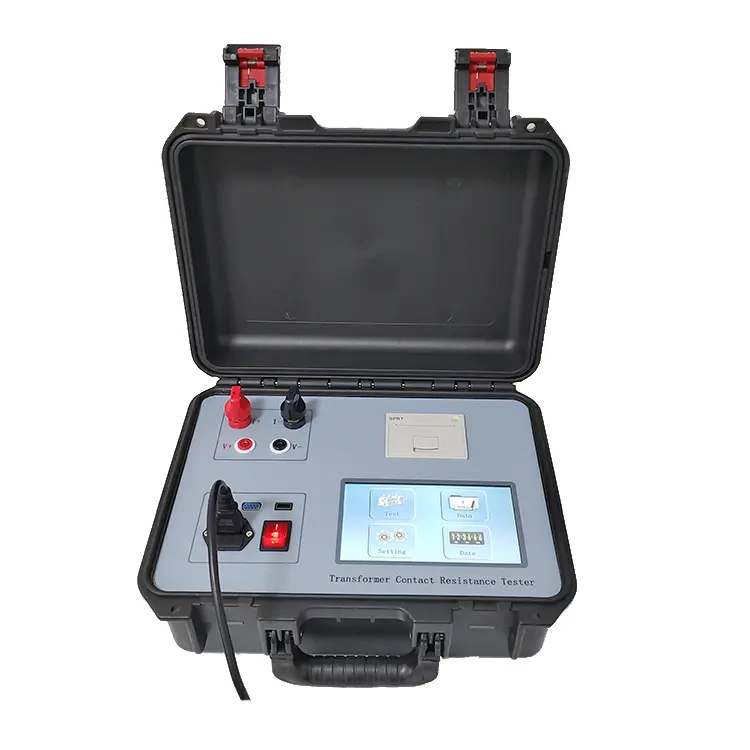In the field of electrical testing, two commonly used devices are the loop resistance tester and the contact resistance tester. While both are used to measure resistance, they serve different purposes and have distinct features. In this blog post, we will explore the differences between these two testers and their applications in the wind energy industry.

What is a Loop Resistance Tester?
A loop resistance tester with resist meter wind, also known as a loop tester or a loop impedance tester, is a device used to measure the resistance in a complete circuit. It is used to ensure that the circuit has been wired correctly and to detect any faults or breaks in the circuit. It is commonly used in the installation and maintenance of electrical systems, such as in buildings and industrial settings.
Features of a Loop Resistance Tester
- Resistance Measurement: The main function of a loop resistance tester is to measure the resistance in a complete circuit. This is typically done by passing a known current through the circuit and measuring the voltage drop, which is then used to calculate the resistance.
- Fault Detection: Loop resistance testers can also detect faults, such as breaks or short circuits, in the circuit. This is done by comparing the measured resistance with the expected resistance in a healthy circuit.
- Earth Loop Impedance: Some loop resistance testers also have the capability to measure the earth loop impedance, which is the resistance between the earth and the live conductors in a circuit. This is crucial in ensuring the safety of electrical systems.
What is a Contact Resistance Tester?
A contact resistance tester, also known as a micro-ohmmeter, is a device used to measure the resistance in electrical contacts. It is commonly used in the maintenance and testing of electrical systems, such as in power plants and substations.
Features of a Contact Resistance Tester
- Resistance Measurement: The primary function of a contact resistance tester is to measure the resistance in electrical contacts. This is done by passing a small known current through the contact and measuring the voltage drop, which is then used to calculate the resistance.
- High Precision: Contact resistance testers are designed to provide highly accurate measurements, with some models having a resolution of up to 0.1 micro-ohm. This is crucial in detecting any faults or degradation in the contacts.
- Portable and Lightweight: These testers are designed to be portable and lightweight, making them easy to use in the field. They are also battery-operated, allowing for use in remote locations.
Loop Resistance Tester vs. Contact Resistance Tester: Key Differences
- Function: The main difference between these two testers is their function. While a loop resistance tester measures the resistance in a complete circuit, a contact resistance tester specifically measures the resistance in electrical contacts.
- Measurement Method: Loop resistance testers use the voltage drop method to measure resistance, while contact resistance testers use the four-wire method. This makes contact resistance testers more accurate and precise in measuring very low resistances.
- Applications: Loop resistance testers are commonly used in the installation and maintenance of electrical systems, while contact resistance testers are mainly used in the testing and maintenance of electrical contacts, such as in power equipment.
- Resistance Range: Loop resistance testers typically measure resistance in the range of 0.1 ohm to 20 kilo-ohms, while contact resistance testers have a much smaller range of 0.1 micro-ohm to 20 ohms.
Applications in the Wind Energy Industry
Both loop resistance testers and contact resistance testers have important applications in the wind energy industry, particularly in the maintenance and testing of wind turbines.
Loop resistance testers are used to ensure that the electrical circuits in the turbine are properly connected and to detect any faults or breaks in the circuit. They are also used to measure the earth loop impedance, which is crucial in ensuring the safety of the turbine.
Contact resistance testers, on the other hand, are used to measure the resistance in electrical contacts, such as in the generator and control systems of the turbine. This is crucial in detecting any degradation or faults in the contacts, which can affect the performance and efficiency of the turbine.